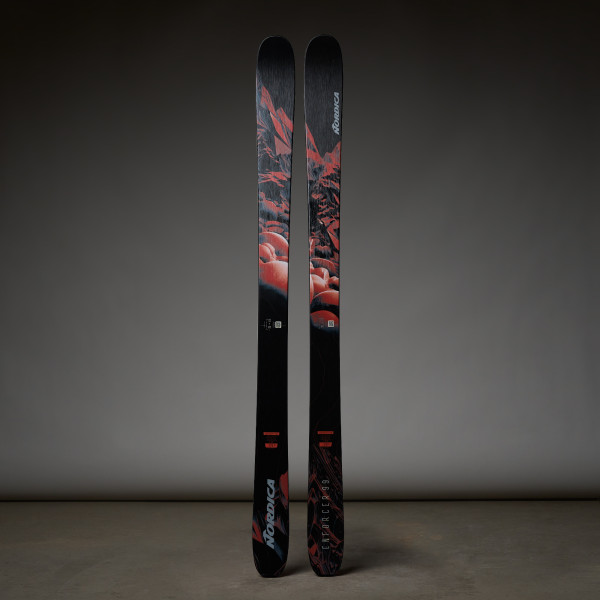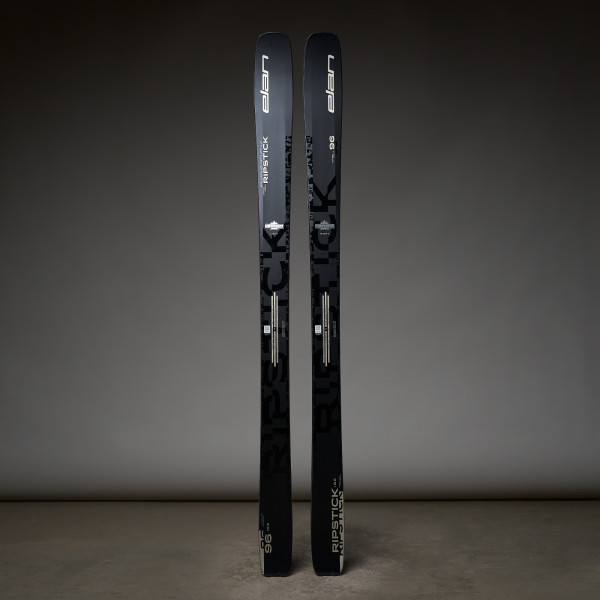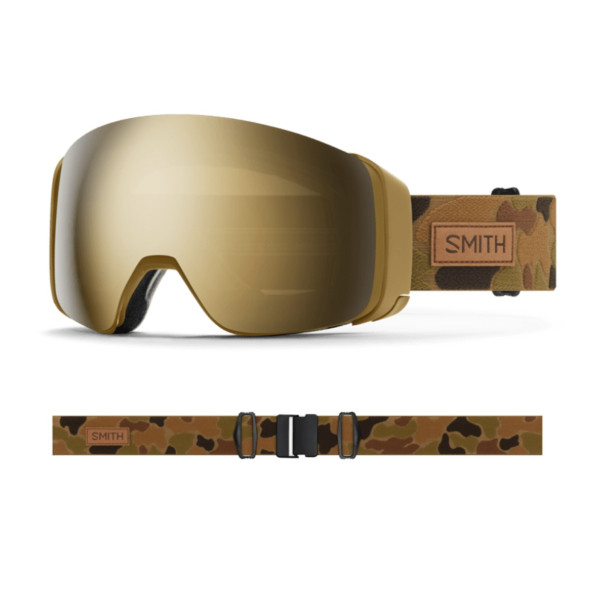Your Shopping Cart
Hot Items
Ski & Snowboard Outlets
How To Adjust Your Look Ski Bindings
Posted March 31, 2014 @ 12:20pm | by Dylan Lavoie
***Disclaimer*** It is best and we recommend having your skis adjusted and mounted by a professional technician at a ski shop. Your safety is important and comes first.
Ski binding adjustments is a rather simple process, but it is imperative that adjustment is done correctly. Each ski binding on the market has there own parameters for proper setup, in this blog I will be going over how to adjust Look SPX and Pivot. Binding adjustments are primarily done to a pre mounted binding with a similar sized boot. If the ski boot is too large or small the binding must be remounted, which is an entirely separate process that should absolutely be done by a professional at your local shop.
I will go over how to adjust these bindings and what you'll be looking for regarding a proper and improper adjustment.
Look SPX Ski Bindings - Forward Pressure
Step one will be going over identifying forward pressure. First click your boot into your current Rossignol Axial binding. Once you have engaged the boot to the binding there is a window on the track directly under the heel piece. On the axial system the window, which is about 1cm long, will either have a yellow tab filling the entire window, half the window, or not visible at all. The ultimate goal is to get the yellow tab to split the window directly in the middle. Showing half the yellow tab and half of the clear window is considered perfect forward pressure.
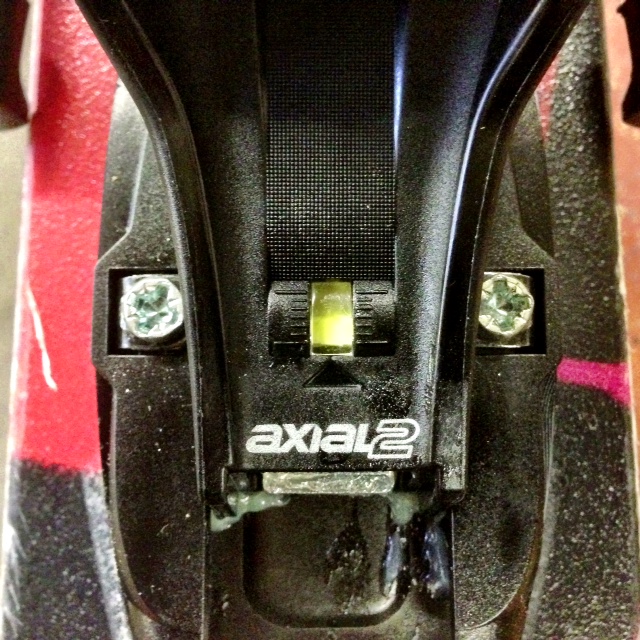
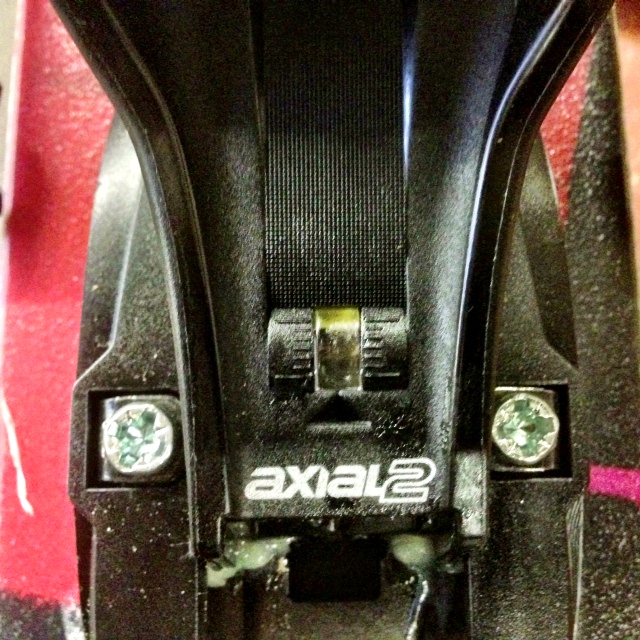
When the yellow tab has filled the window completely this indicates that the forward pressure is too loose, as the image on the left shows. This will result in ejecting far to easily. THIS IS BAD.
When the yellow tab is not visible at all, this indicates the forward pressure is too high. When the bindings have too much or too little forward pressure, they are not safe and you should not take them out on the hill.
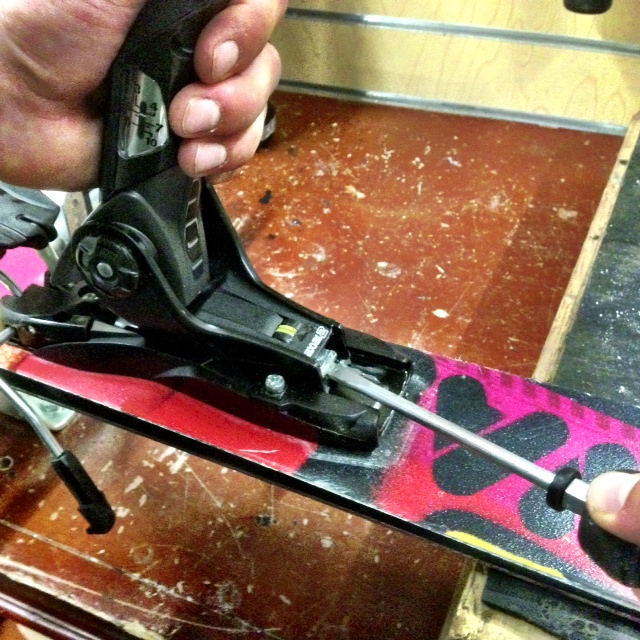
To adjust the heel piece/forward pressure take a flat head screw driver and locate the metal tab underneath the forward pressure window. Wedge the flat head underneath this tab and simply leverage the tab upwards, which will disengage the locking mechanism. When the forward pressure is too high the heel piece must be moved backwards toward the tail of the skis. When theres not enough forward pressure the heel piece must be moved forward towards the tip of skis. Start by sliding the heel piece back/forward one increment at a time, depending on whether the boot is too tight or too loose, and pressing the tab back down to secure the binding. Each time you do this reengage the boot back to the binding to identify how much forward pressure has changed.
Remember you are looking for the end of the yellow tab to sit as closely to the middle of the window while your boot is engaged in the binding. Once you have the forward pressure set properly like in the image below you are good to go.
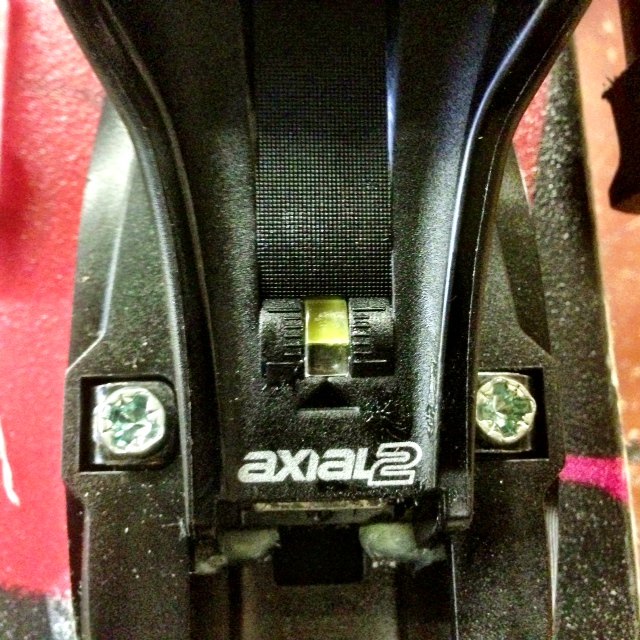
If you have moved your heel piece all the way forward or backwards and still can not get the forward pressure to set properly, you most likely will need a remount done at your local shop.
Look Pivot Ski Bindings - Forward Pressure
The Look Pivot binding is slightly more difficult. The main difference is the FKS heel does not slide on a track. Therefore creating more space for the boot takes a little more dialing in.
You will notice on the heel piece of the Pivot there are two stems located on each side of the heel piece. Adjusting these stems is how you create more space for the boot. So start by engaging your boot into the binding. The first thing you want to look at is the white tab located on the base of the heel plate. On the sides of the white tab is two dashes. What you are trying to do is have the end of the white tab sit as close to the center of the dashes on the side. The image below shows the forward pressure on the Pivot is set properly.
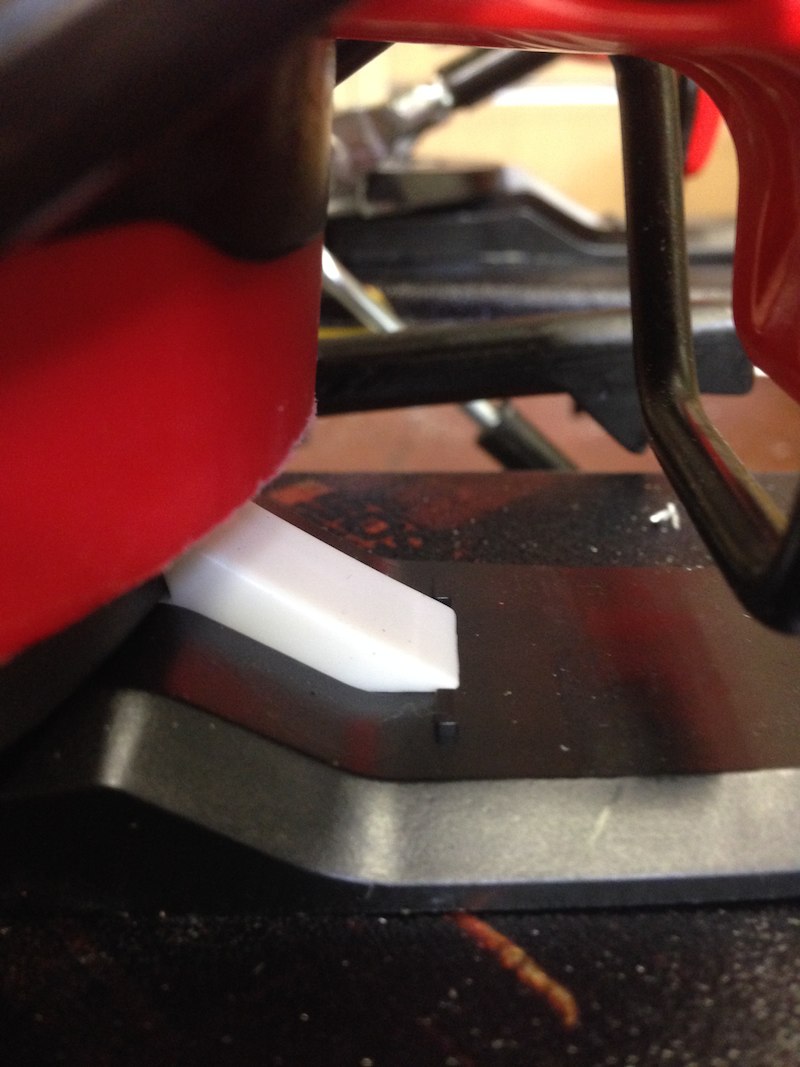
When the tab is considerably past the dashes this indicates the forward pressure is too high. When the tab hasn't reached the dashes the forward pressure is too low. The image below illustrates that the forward pressure is too low.
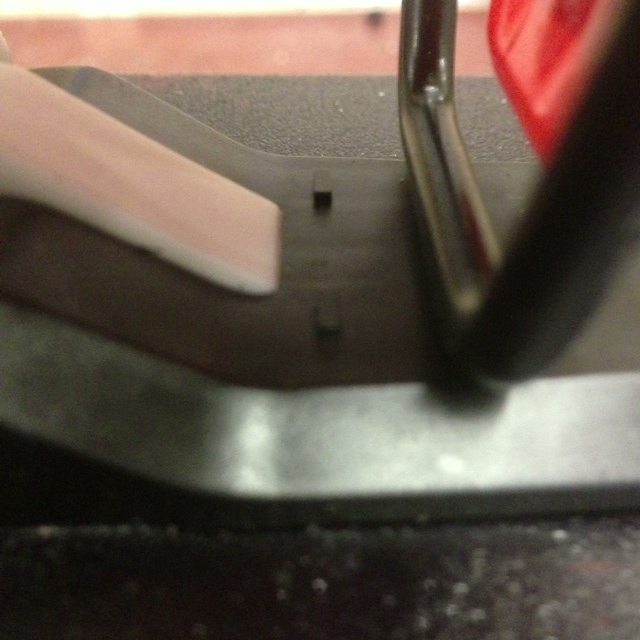
When the pressure is too high you need to get a phillips head screwdriver. Locate the phillips screw, which will be found on the top of each stem located on the side of the heel piece. Make incremental adjustments to both stems equally. Counter clockwise rotations will extend the length of these stems and creates more space for the boot.
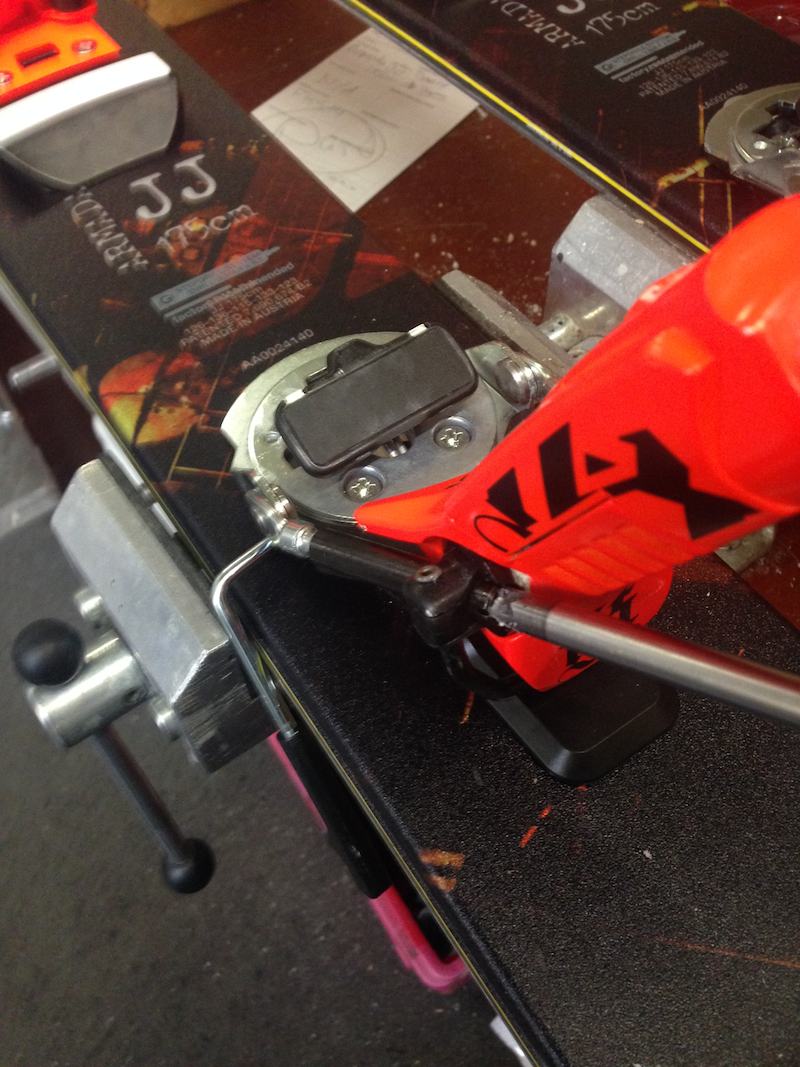
As the stems grow in length the more you adjust, you will notice there are hashes on male/silver part of the stem. These are there as a reference to ensure that both stems are set to equal lengths.
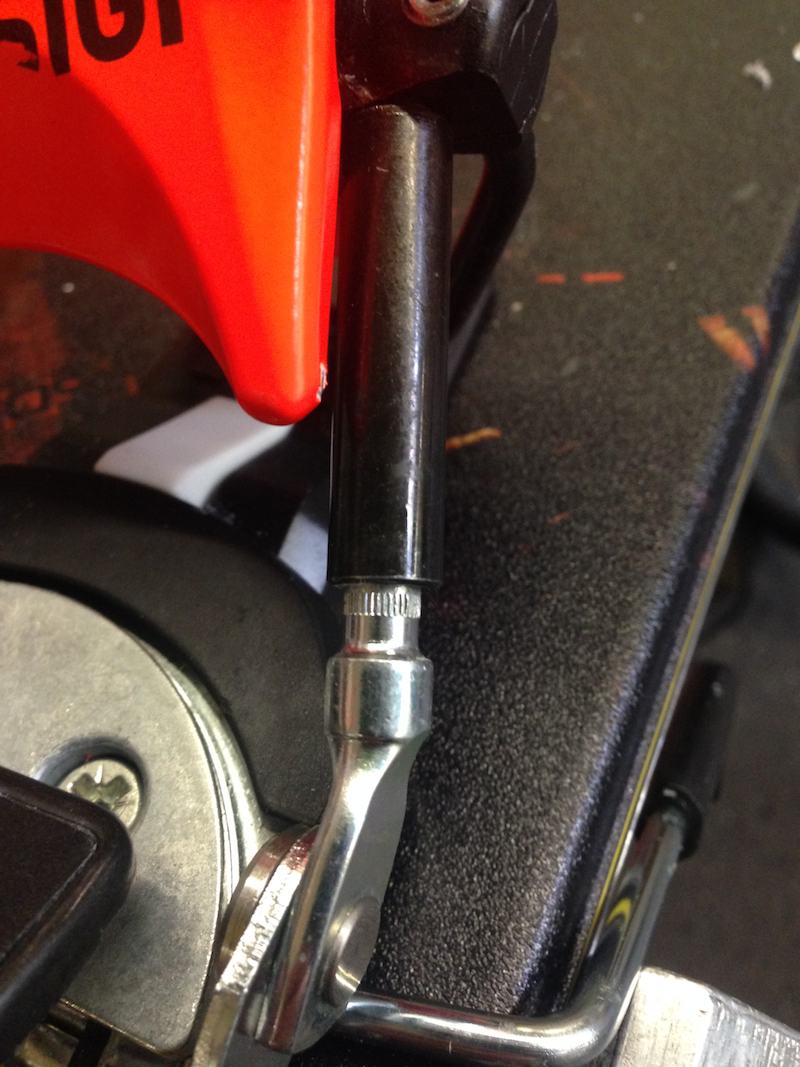
Make your adjustments about a 1/2 cm at a time and reengage the boot. You will begin to notice the white tab indicating the forward pressure on the heel plate will start to creep closer to center of the dashes. Repeat these steps until you have landed the tab in the proper location.
If the forward pressure is too loose. You are going to want to shrink the length of the stems. Turn the screw at the top of each stem clockwise, which will cause the stems to become shorter. Follow the same steps by making equal incremental adjustments to each stem and reengage the boot until you have landed the end of the white tab between the two dashes.
If at any point you are unsure of the location of your forward pressure do not hesitate to bring it to your local shop. A small binding adjustment fee is much more affordable than a total knee replacement.
Setting the DIN (Release Setting)
The last part of any binding adjustment is setting the DIN/your release setting. The DIN windows are located on both the toe and heel pieces. The DIN setting on your toe and heel piece should always be the same. The bigger the number the higher the DIN setting. The higher the DIN setting the harder it is to release/eject out of your bindings.
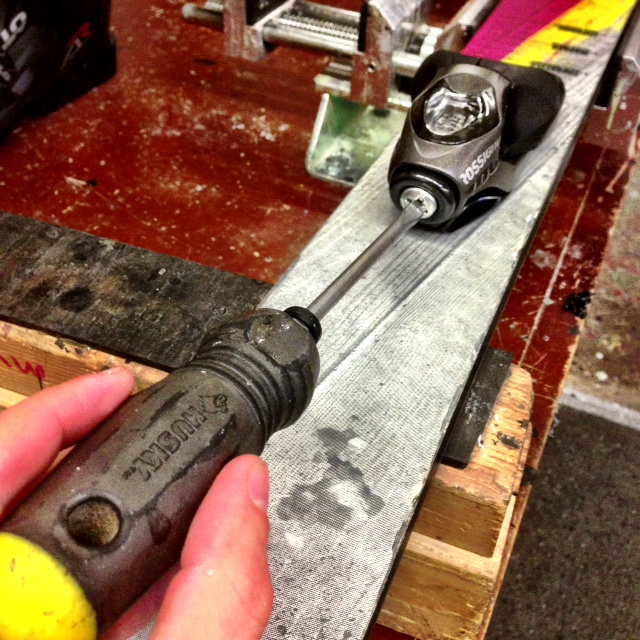
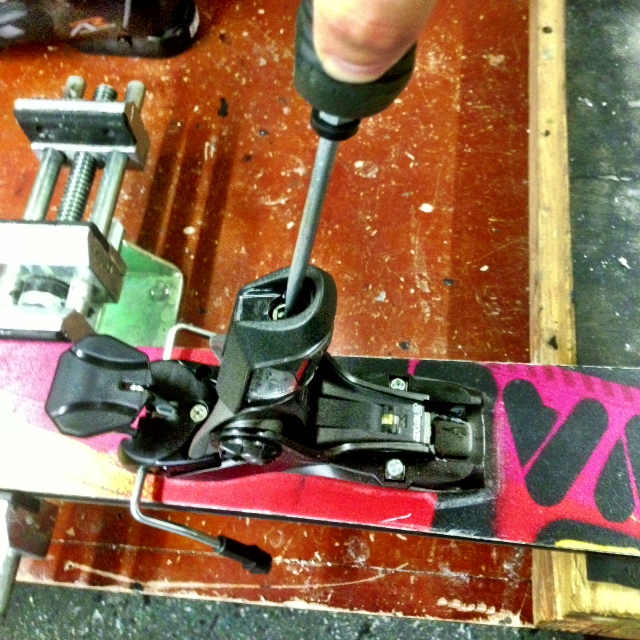
Now you may be asking 'How do I know what my DIN is supposed to be?'. If you find yourself asking that question, go take your skis to a shop and have them get your bindings dialed in for you. Once you know what your DIN is supposed to be for a certain binding (It does differ a bit from brand to brand) you'll know what to set your bindings at for next time.
The one thing that I want you to take away from this blog is knowing what it means to have your forward pressure set properly. When skiers pre-release out of there bindings or don't release at all, an incorrect forward pressure is often the culprit. If the forward happens to be set properly, then the DIN's (release settings) are most likely either too high or low... AND sometimes... sometimes... it's extremely rare, but you could have a lemon of a ski binding.
Related Articles:
How to: Adjust Marker Ski Bindings
How to: Adjust Salomon Ski Bindings

